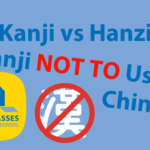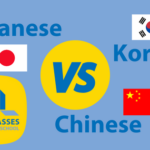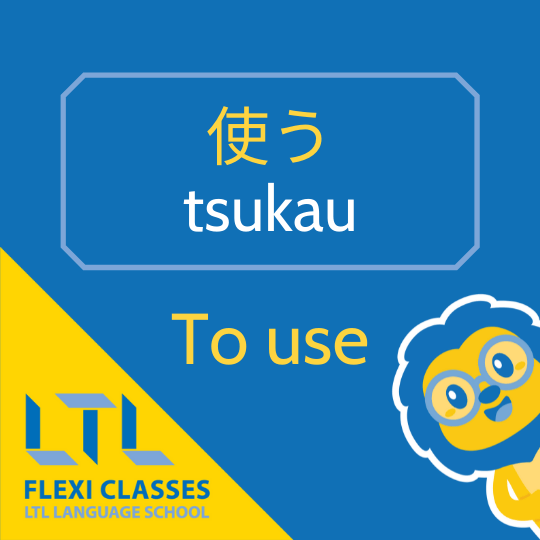Verbs in Japanese // A Beginners Guide
Japanese Verbs // A Springboard for your Japanese Studies
Verbs are the foundation of Japanese language, in fact verbs are a foundation of any language. So on that note it’s about time we provided you with an article on how to use verbs in Japanese.

If you’re a Japanese language enthusiast, learning verbs and its conjugations is the most basic and important aspect to understand and use the language day to day.
Going back to the very basics, verbs are doing words.
- To do
- To play
- To see
- To get
- To say
Verbs are a fundamental part of daily speech.
QUICK VOCAB | Verb in Japanese is 動詞 doushi.
Today we’ll introduce you to the fundamental facts about Japanese verbs so let’s get started right away!
Verbs in Japanese | The 3 Different Groups
Verbs in Japanese | Basic Verb Conjugation
Verbs in Japanese | Most Commonly Used Verbs
BONUS | FREE QUIZ
Verbs in Japanese | FAQ’s
Verbs in Japanese | The 3 Different Groups
OK here’s the deal.
Japanese verbs are categorized in three groups,
- Group One | 五段動詞 ごだんどうし go-dan-doushi
- This group are the five form verbs
- Group Two | 一段動詞 いちだんどうし ichi-dan-doushi
- This group are the one form verbs
- Group Three | 不規則動詞 ふきそくどうし fukisoku-doushi
- This group are the irregular verbs
Let’s quickly go through these in reverse order:
ふきそくどうし | Irregular Verbs
Group three verbs are the easiest verbs to remember. Why?
You wouldn’t normally associate learning irregular verbs as the easiest! Any Italian learners out there will know exactly what we are talking about here!

Anyway back to the question, why?
Because this group consist of only two verbs!!
- To do | する suru
- To come | 来る kuru
That’s it! Japanese only has two irregular verbs. They are commonly used, but because of that you’ll be remembering them in no time.
NOTE | These verbs are written in the dictionary form and will need to be conjugated to be used in sentences. We’ll come onto this in chapter two.
Let’s take a quick look at する and 来る being used in actual sentences.
Can you come on Friday?
金曜日に来られる?
kinyoubi ni korareru?
Did you do your homework?
宿题をしましたか?
shukudai o shimashita ka.
Don’t worry too mich about tenses too much yet. They actually aren’t too hard in Japanese.
For now let’s get used to the types of Japanese verbs and how they appear in a sentence.
Notice in these two examples the sentence almost flips round in comparison to English.
FOR EXAMPLE | The first words in the Japanese sentences are homework and Friday, whereas these are the final words in the English equivalents.
TOP TIP | When learning Japanese DO NOT try and translate things word for word because of this very fact!
いちだんどうし | One Form Verbs
This group of Japanese verbs has acquired name ichi-dan doushi which translates to one-form verb in English.
Why is this?
Because the base of the verb stays the same when it’s conjugated.
For you to be able to remember them easily, let’s keep in mind that they all end with ru.
Due to this, the same rules apply to all the verbs while changing their form. Nice and simple!
Some examples of verbs of this group are :
- To eat | 食べる taberu
- To sleep | 寝る neru
What do you want to eat?
何が食べたいですか?
nani ga tabe-tai desuka?
I want to eat lots of different things.
いろいろ食べたいです
iroiro tabe-tai desu

Hanzi vs Kanji // Japanese Kanji NOT To Use in Chinese
Hanzi vs Kanji // Japanese and Chinese have a long history of sharing characters with each other, but it’s not always as simple as that. Find out why…
ごだんどうし | Five Form Verbs
Five-form Japanese verbs are a little bit tricky.
They may either have a ru ending or may have u ending.
For verbs ending in 「る」, if the vowel sound preceding the 「る」 is an a, u or o vowel sound, it will always be a u-verb.
As you keep on learning Japanese, you will come across some deceiving verbs but the number is very limited.
Some examples of Japanese verbs in this group are :
- To drink | 飲む nomu
- To speak | 話す hanasu
- To enjoy | 遊ぶ asobu
- To know | 分かる wakaru
I want to drink
饮みたいです
nomi taidesu
Can you speak English?
英语が话せますか?
eigo ga hanase masu ka?
You are now introduced to verbs and their categorization but how can you use them in sentences?

Japanese vs Korean vs Chinese | Which Is Really The Hardest?
Thinking about learning an East Asian language and don’t know which one to go for? Japanese vs Korean vs Chinese – it’s a tough choice right?!
Verbs in Japanese | Basic Verb Conjugation
The most commonly used form of Japanese verbs is ます(Masu) form.
The masu form is a part of 丁寧語 (teineigo).
It is the “normal” form native speakers use with people they’re not intimate with, or may use with people that are socially higher.
It is a basic polite form to help you get by if you are unaware about different levels of polite language used in Japanese Language known as 敬語 keigo.
When speaking with a Japanese native, this form will help you connect to them politely without offending and, guess what – It’s easy to master.
The ます form is used to make generalised statements and express the future.
Let’s dig deeper into each Japanese verb group.
Group Three // ふきそくどうし
As there are only two verbs in this group, it’s advised to remember them as they are.
- The verb to do | する―します shimasu
- The verb to come |来る―来ます kimasu
Group Two // いちだんどうし
For Group Two verbs, remove ru and attach ます(masu) to the verb stem.
- The verb to eat |食べる―食べます tabemasu
- The verb to sleep | 寝る―寝ます nemasu

Group One // ごだんどうし
Change the u-ending to the corresponding i-ending and attach ます to the verb stem.
- The verb to drink | 飲む―飲みます (nomimasu)
- The verb to speak | 話す―話します (hanashimasu)
- The verb to enjoy | 遊ぶ―遊びます (asobimasu)
The negative form simply adds ません (masen).
So, to negate the sentence, remove ます and attach ません to the verb stem. For example:
- The verb to do | する―しません shimasen
- The verb to eat | 食べる―食べません tabemasen
- The verb to speak | 話す―話しません hanashimasen
To convert the sentence into past tense, remove ます and attach ました to the verb stem.
- The verb to do | する―しました shimashita
- The verb to eat | 食べる―食べました tabemashita
- The verb to speak | 話す―話しました hanashimashita
And to make the past-negative of the verb, we attach でした as shown here:
- The verb to do |する―しませんでした shimasen-deshita
- The verb to eat |食べる―食べませんでした tabemasen-deshita
- The verb to speak | 話す―話しませんでした hanashimasen-deshita
Let’s now put all of these together using a verb and show you some examples of Japanese verbs in full flow.
Here is the Japanese verb “to write” 書く kaku
We’ll talk about writing a letter, which is 手紙 tegami
- To write a letter | 手紙を書く tegami-wo-kaku
- I write a letter | 手紙を書きます tegami-wo-kakimasu
- I don’t write a letter | 手紙を書きません tegami-wo-kakimasen
- I wrote a letter | 手紙を書きました tegami-wo-kakimashita
- I did not write a letter | 手紙を書きませんでした tegami-wo-kakimasen-deshita
Verbs in Japanese | Most Commonly Used Verbs
To finish our lesson on Japanese verbs we wanted to provide you with the most commonly used ones so you can start practicing to use them in sentences right away!

- To arrive | 着く tsuku
- To be able to | 出来る dekiru
- To be or it is | です desu
- To become | なる naru
- To call | 呼ぶ yobu
- To do | する suru
- To drink | 饮む nomu
- To eat | 食べる taberu
- To go | 行く iku
- To have or hold | 持つ motsu
- To learn | 学ぶ manabu
- To make | 作る tsukuru
- To meet | 会う au
- To put | 置く oku
- To receive | 受ける ukeru
- To return home | 帰る kaeru
- To say | 言う iu
- To see | 见る miru
- To send | 送る okuru
- To use | 使う tsukau
- To wait | 待つ matsu
- There is (for inanimate objects and plants) | ある aru
- There is (for living things, like humans and animals) | いる iru
BONUS | FREE QUIZ
How much did you remember?
It’s time to put you to the test with our quick fire ten question quiz on Japanese verbs!
Results are instant and it should take no more than a couple of minutes. Can you nail a perfect 10 score?
If so, why not share in the comments below!
Good luck!
That’s your beginners guide to Verbs in Japanese complete.
Feel free to save, download and share the flashcards and drop us any comments below if you have any questions or feedback.
We’ve got plenty of other articles we think you’ll also enjoy which include:
- Discover the most commonly used Kanji
- Learn how to tell the time in Japanese
- Find out how to study Japanese with song lyrics (the right way)
Don’t forget you can also study Japanese online with us using our amazing Flexi Classes system and be sure to follow us on Instagram for more free materials, flashcards and infographics.

FANCY LEARNING MORE? What about discovering over 130 verbs in Chinese whilst you’re here as well.
You might even recognise some of the Japanese Kanji used in Mandarin as well!
Verbs in Japanese | FAQ’s
How do you say verb in Japanese?
Verb in Japanese is 動詞 doushi.
How do you say “Can you speak English” in Japanese?
英语が话せますか?
eigo ga hanase masu ka?
How do you convert a Japanese verb to the past tense?
To convert a Japanese verb into past tense, remove ます and attach ました to the verb stem.
The verb to do | する―しました shimashita
The verb to eat | 食べる―食べました tabemashita
The verb to speak | 話す―話しました hanashimashita
What is the verb to drink in Japanese?
To drink in Japanese is 饮む nomu.
What is the verb to say in Japanese?
To say in Japanese is 言う iu.
What is the verb to learn in Japanese?
To learn in Japanese is 学ぶ manabu.
Want More From LTL?
WANT TO LEARN JAPANESE? Check out our online Japanese courses here.
We offer a 7-day free trial to all new students where you can study 24/7.
What about studying Japanese in Japan instead? We’ve got your back. Our Japanese courses in Tokyo can either be taken in small groups of no more than 5 students or individually for a more tailored experience.
We even offer incredible homestay experiences in Tokyo as well.
Come and be a part of this amazing community.
















4 comments
I'm still at the 食べる and 食べます stage!
No shame at all in that. You've done well to get that far, keep going Steph!
Grammar in Japanese is so much easier than Russian 😫
It's really not as hard as people think (Japanese that is)!